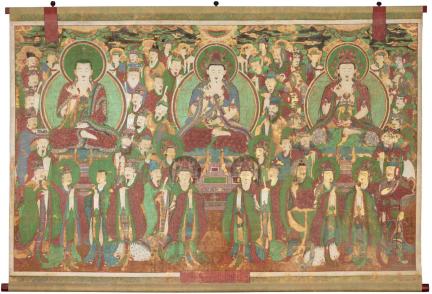우리지역 국가유산
경기도 유형문화유산
여주 신륵사 극락보전 삼장보살도 (驪州 神勒寺 極樂寶殿 三藏菩薩圖)Three Bodhisattvas Painting in Geungnakbojeon Hall of Silleuksa Temple, Yeoju
| 분 류 | 유물 / 불교회화 / 탱화 / 보살도 |
|---|---|
| 수량/면적 | 전체크기 190.5×287.8 화면크기 173×280cm |
| 지정(등록)일 | 2013.11.12 |
| 소 재 지 | 경기도 여주시 신륵사길 73 (천송동, 신륵사) |
| 시 대 | 1775 |
| 소유자(소유단체) | 대한불교조계종신륵사 |
| 관리자(관리단체) | 대한불교조계종신륵사 |
















